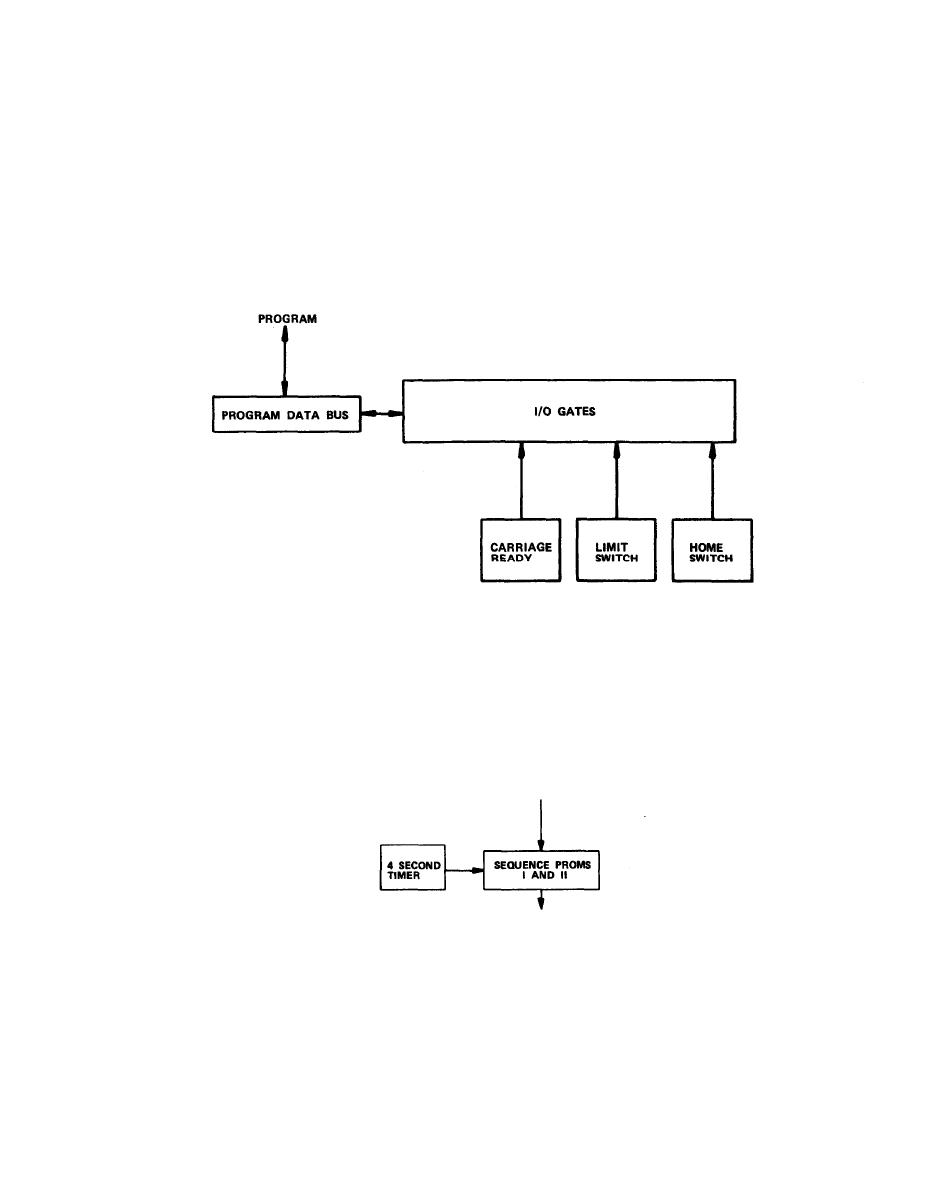
TM 5-6675-316-14
(f) If the total step count is more than 32, the motor step/delay counters
are set to the 32-step profile. First this step profile delivers 16 acceleration
steps to both the motor step/delav counters and motor sequencer. At the completion
of the 16 acceleration pulses, the 5000 Hz signal is applied to the motor step/delay
counters and motor sequencer. The motor is now running at 5000 steps/see with the
motor step/delay counters counting down at the same rate. When only 16 steps are
remaining, the deceleration sequence begins. The 5000 Hz pulse is shut down, and
the scanning counter accesses the deceleration profile from the PROM. At the com-
pletion of the 16 deceleration steps, the zero condition in the counter starts the
delay sequencer and stops the stepping action.
(g) The escapement carriage has a limit switch and a home switch, both of
which are gated with a forward and reverse flip-flop. The output of these gates is
a stop stepping signal which indicates that the escapement carriage has hit one of
the limit switches. The CARRIAGE READY signal allows the escapement carriage to
move away from a struck limit switch. All these signals are passed through the 1/0
gates to the program data bus.
The final circuit on this board is the power shutoff to the carriage escapement
motor. When the timer detects that the motor has not been given instructions to
move for approximately 4 see, it shuts off the enable signal of the two sequencing
PROMS . This removes power from the carriage escapement motor.
2-65

